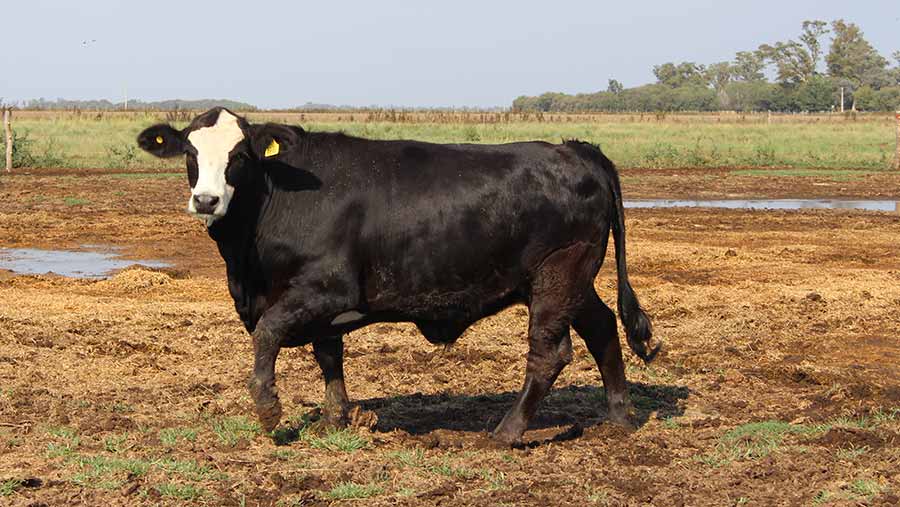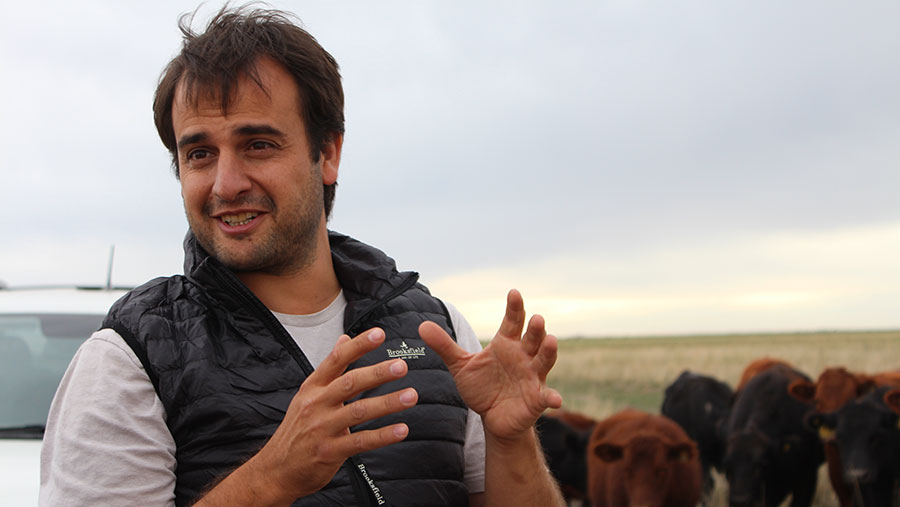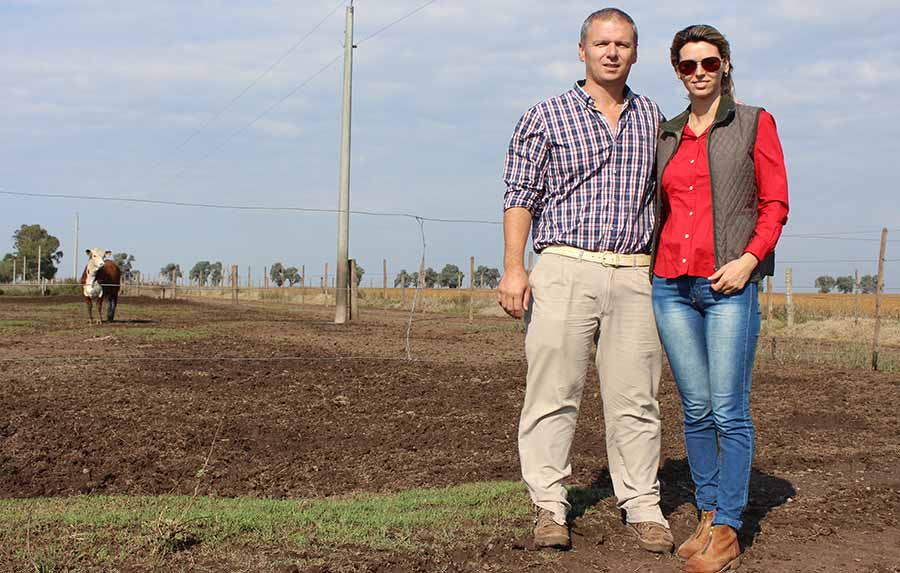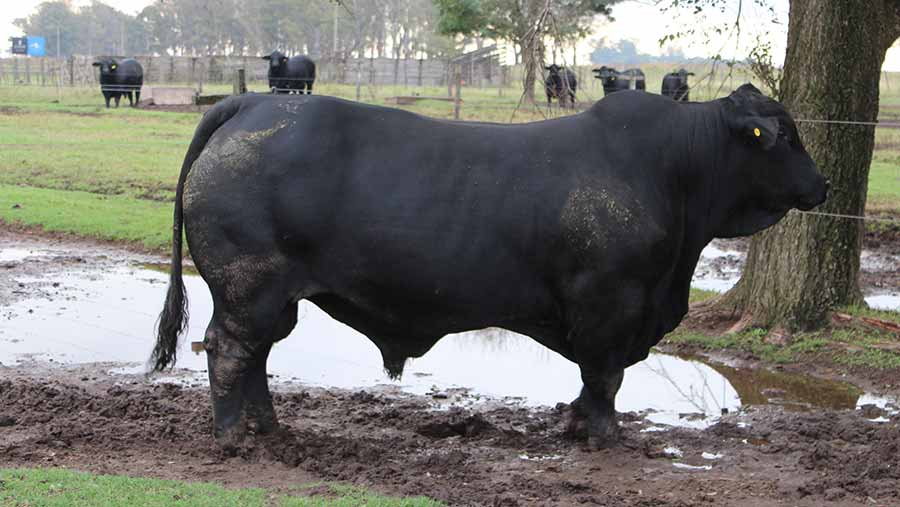How Argentina is producing beef for EU export
 The Braford can produce a larger steer, quicker, with equal beef quality to the purebreds
The Braford can produce a larger steer, quicker, with equal beef quality to the purebreds Political change in Argentina has given many beef farmers the confidence to invest in production and actively seek to export to the European Union.
Between 2003 and 2015, an anti-farming, socialist government made it unattractive to export beef. However, the new ruling party is encouraging farming and beef exports.
Some farmers are choosing to produce beef for the EU under the Hilton Quota, which requires quality beef cuts from cattle that have been finished on pasture – although there seems to be some variability in the interpretation of requirements (see “Hilton Quota requirements”).
This largely suits farmers in the traditional grass-growing regions of the Pampas – for which Argentina is famed.
See also: Growing beef market threat from Argentina
Nicolas Lafontaine, Sud Oeste, General Lamadrid
Nicolas Lafontaine, who farms at Sud Oeste, General Lamadrid, is one such producer. A low-cost, grass-centric system has always made sense to him, regardless of market outlet.
In fact, by focusing on reseeding, fertiliser use and grass monitoring, he has increased stocking rates from 0.7 livestock units (LSU) a hectare to 1.48 LSU/ha. Meat production has subsequently increased from 177kg/ha in 2012 to 257kg/ha in 2017.

Nicolas Lafontaine
Farm facts
- 2,000ha total, 1,500ha of which used for livestock
- 1,100 cows
- Black Aberdeen Angus, red Aberdeen Angus and some Aberdeen Angus cross Hereford cows
- Steers finished for beef
- Heifers kept as replacements or sold as breeding females
- Calve end June to 10 September
- Maize, sunflower, barley and wheat grown – barley and some maize kept for cows, rest sold
- 700mm rainfall/year
It is this attention to grassland management that has enabled the business to send beef for the Hilton Quota for the first time this year.
Genetic selection is also key and is one of the reasons Mr Lafontaine is able to produce cattle to suit the varying requirements of internal and external markets.
The Argentine market favours smaller finished animals of about 340kg liveweight for heifers and 400kg for steers, as the consumer believes these cattle are more tender.
They tend to be slaughtered at about 12-14 months. In comparison, the EU market wants an animal of more than 450kg liveweight, which generally means they’re older.
Cattle type
Mr Lafontaine says: “In Argentina, it’s common to say you have to make one kind of cow for export and a different kind of cow for internal consumption. This year we exported 40 steers and 100% went to Hilton at 16-17 months old. A lot of people say this is a lie, how can we do that? It’s about making selection for quality of meat.”
By producing a steer of about 460kg, the business is sending a lighter animal for export, but a heavier animal for internal consumption, and getting a good price for both.
Mr Lafontaine adds: “Four of the steers that went for Hilton were too light, but they made it into Hilton because they had very good carcass conformation.”
This links back to years of selecting sires with good growth and muscle conformation to produce animals that are short, but deep in the body for maximum meat yield.
It is this that helped steers to reach slaughter eight months earlier than achieved by most farmers who send their cattle to Europe.
Grass management
Maximising grass production to aid fattening is also key. To drive grassland performance, Mr Lafontaine has implemented grassland improvement techniques, including grazing down to residuals of about “fist height” and a “leader-follower” system.
About 20% of grazing ground is now fertilised using urea or diammonium phosphate, which has brought a 15% increase in dry matter yields/ha.
Mr Lafontaine has also been involved with a trial using satellites to assess grass covers and plan rotations. The programme uses historic farm grass growth data, current rainfall data and satellite information on how light is reflected off pasture, to predict grass growth and covers.
This is now being used as a practical tool, enabling Mr Lafontaine to plan where to graze different classes of livestock, depending on grass growth.
Pasture use
Overseeding has mostly involved the use of a fescue and wheat grass mix. Much of this work has focused on poorer, dry, alkaline soils, which make up 60% of the farm and are mostly wheat and weed grass.
The remainder of the farm is made up of “dunes” or “lagoon” areas. The dunes are two metres higher than most of the land and have better soil quality, making them ideal for cropping.
Italian ryegrass will follow wheat for one year and be grazed in winter by maturing animals.
The lagoons are a water overflow area that tend to be more fertile and are used for summer grazing and fattening stock. Some of these areas have been direct drilled with the fescue and wheat grass. Lucerne is also planted for summer grazing.
These pastures form the basis of diets. In a normal year, only steers receive any form of supplementation. Traditionally this has involved feeding maize or barley grain in the autumn, post-weaning.
However, Mr Lafontaine has decided to feed it in autumn and winter at 0.7% of body weight, which he says is in line with Hilton requirements.
“That 0.7% strengthens the rumen so they can better digest the grass and it improves the daily weight gain,” he explains.
Hilton Quota requirements
- Animals must be exclusively fed through pasture grazing from weaning
- Animals should not be raised under any type of confinement or stalling for feeding, except for exceptional climatic reasons
- Supplementation with concentrated and/or balanced feed stuffs of commercial of industrial origin is prohibited
- Cattle must not be fed protein of animal origin
Comment: There appears to be some variability in how the Hilton Quota rules are interpreted. Both farmers visited were approved for EU export, were forward thinking and believed they were doing everything right for the quota. However, Mr Lafontaine was feeding maize grain, while Mr Huber was fattening steers on a confinement system. This appears to go against the Hilton rules.
“The annex to the draft report of the audit DG Sanco (2014-7226) carried out in Argentina from 3 to 15 September 2014” found all Argentine holdings visited considered supplementing grazing with homegrown grain at key moment of production to be in line with Hilton requirements.
This also appeared be the understanding of the National Service for Health and Agri-Food Quality. It was therefore not identified as a non-compliance. However the report said: “The reliability of the system is undermined by the misreading of the Hilton Quota feeding requirements by operators and the competent authority.”
However, prior to print, the UK Argentine embassy confirmed that animals for Hilton should be pasture grazed from weaning and animals could not be kept on confinement systems.
It appears there needs to be some improvements in how rules are communicated to ensure they are understood and followed.
Marcelo Huber, La Olguita, Bell Ville
Crossing Aberdeen Angus and Hereford cows with a Bos indicus bull is becoming increasingly popular among farmers looking to produce a larger animal for export under the Hilton Quota.
Figures from the Institute for the Promotion of Argentine Beef Consumption (ICVA), suggest 40% of beef produced for Hilton are Bos indicus-crosses or continentals, with the rest being traditional pure-bred Aberdeen Angus and Hereford.

Marcelo and Veronica Huber
Farm facts
- La Olguita (farm) located in Bell Ville in the central Pampas region
- 1,000ha – 650ha grazed by livestock, 350ha for crops
- 800 Braford cows
- 900mm annual rainfall
- Grow oats which are grazed as “winter greens”, lucerne and fescue and wheat grass leys
- Wheat, soya and maize in rotation with grass
- 60% kill-out percentage
Argentinian farmers choose to cross with a Brahman Bos indicus breed as a means of producing an animal better able to cope with the heat in certain areas of the country.
The breed also offers the flexibility of producing a smaller animal for the internal market or larger animal for export, if desired.
In fact, the animal’s ability to produce a larger steer quicker, with equal beef quality to the pure-breds, is a key selling point for farmers looking to export.
Marcelo Huber has chosen to move away from pure Herefords and cross to a Brahman to produce a Braford animal. He believes the cross is better suited to his low-quality, saline soils.
“The cows tend to be lighter, eat less food and they have better response to grass,” he says.
Since the election of the new Argentine government, Mr Huber has increased the proportion going to Hilton from 5% to 80%.
“I can have a 500kg steer for export ready in 16 months with a Braford,” he says. He believes it would be difficult to do the same with a straight Hereford while maintaining meat quality.

An example of a Brangus breeding bull – an Angus cross Brahman
Post weaning, steers for Hilton are fattened on a “confinement system” (bare ground) and fed 25-30kg a head of lucerne bales and up to 7kg maize corn.
Mr Huber calls this “mechanical grass feeding”, which he says fulfils EU requirements. “Hilton is not about the way the animal lives – it’s what it eats,” he adds.
Mr Huber says it’s financially advantageous to produce for Hilton, particularly considering he is able to keep costs low by producing all of the feed on farm.
He says he gets about a 5-7% better price for exported beef over the internal market.

The Braford can produce a larger steer, quicker, with equal beef quality to the purebreds
Brahman attributes
The cattle we see in Europe are Bos taurus cattle that are suited to cooler climates (for example, Aberdeen Angus and Belgium Blue). In comparison, Bos indicus cattle such as the Brahman are adapted to hot climates.
This is because:
- Their skin folds increase their surface area and make them more able to release heat.
- Their “hump” means they have more fat reserves relative to an Angus, so are able to cope better with drought.
- They have black or dark skin pigmentation, which is more resistant to the sun.
- Their resistance to ticks is also attractive in northern Argentina. Ticks cause blood and weight loss, but can also spread diseases, which can lead to anaemia and death.
